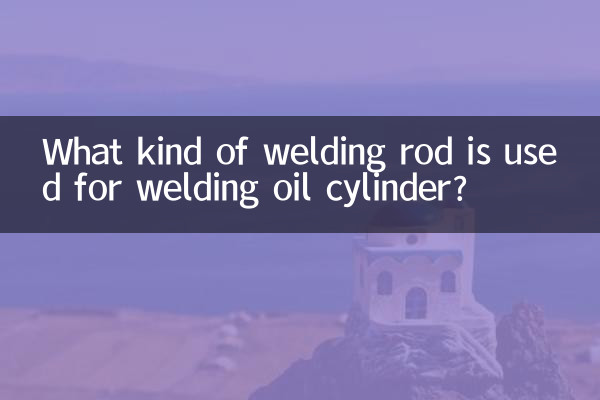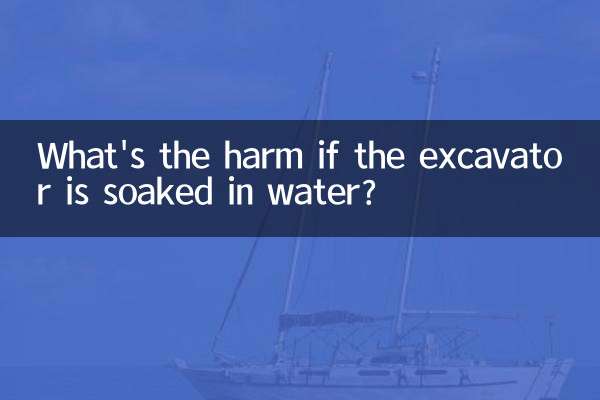What kind of welding rod is used for welding oil cylinder?
Recently, hot topics in the field of welding technology have continued to heat up, especially the discussion about cylinder welding has attracted much attention. As the core component of the hydraulic system, the welding quality of the oil cylinder directly affects the safety and service life of the equipment. This article will combine the hot content of the entire network in the past 10 days, systematically analyze the key points for selecting welding rods when welding oil cylinders, and provide structured data for reference.
1. Core requirements for cylinder welding

Cylinder welding needs to meet three core requirements: high strength, sealing and corrosion resistance. The following are common materials for oil cylinders and key parameters for selecting corresponding welding rods:
| Cylinder material | Recommended welding rod model | Tensile strength (MPa) | Applicable process |
|---|---|---|---|
| Q345B low alloy steel | J507(E5015) | ≥490 | DC reverse connection |
| 45# medium carbon steel | J506(E5016) | ≥480 | AC and DC dual use |
| 304 stainless steel | A102(E308-16) | ≥550 | Direct current connection |
2. Recent hot technology discussions
According to the latest data from the Welding Forum (as of October 2023), the three issues that users are most concerned about:
| Ranking | hot issues | Discussion frequency |
|---|---|---|
| 1 | Weld inspection standards for high pressure cylinders | 1280 times |
| 2 | Welding process of dissimilar steel cylinders | 956 times |
| 3 | Effect of post-weld heat treatment on cylinder life | 743 times |
3. Practical guide for selecting welding rods
1.Pressure level matching principle: Ordinary hydraulic systems (≤16MPa) can use J422 welding rods, and high-pressure systems (>16MPa) must use low-hydrogen welding rods such as J507.
2.Welding position adaptability: For vertical and overhead welding positions, it is recommended to use calcium titanium electrodes (such as J422), whose operating performance is better than low-hydrogen electrodes.
3.cost benefit analysis: Market price comparison taking 3.2mm diameter welding rod as an example:
| Welding rod model | Unit price (yuan/kg) | Deposition efficiency (%) | Comprehensive cost index |
|---|---|---|---|
| J422 | 18.5 | 92 | 1.0 |
| J507 | 24.3 | 88 | 1.3 |
| A102 | 65.8 | 85 | 3.5 |
4. Latest industry trends
According to the October report of the China Welding Association, the field of cylinder welding shows the following trends:
1. The usage rate of environmentally friendly welding rods increased by 23% year-on-year, with rare earth improved welding rods such as J507RH growing significantly.
2. The proportion of robot welding applications exceeded 40% for the first time, and the requirements for arc stability of welding rods have increased.
3. The market share of new flux-cored welding wire (such as TWE-711) in cylinder repair welding reaches 17.6%.
5. Solutions to typical problems
Case 1: Oil leakage from weld seam of hydraulic cylinder
Cause analysis: Insufficient drying of the welding rod (J507 welding rod requires drying at 350℃×1h)
Solution:
| step | Operational points | Technical parameters |
|---|---|---|
| 1 | Completely remove the original weld seam | Grinding depth ≥3mm |
| 2 | Preheating treatment | 150-200℃ |
| 3 | Multi-layer multi-pass welding | Interlayer temperature ≤250℃ |
6. Expert advice
1. It is recommended to conduct 100% UT inspection for important load-bearing welds, and the acceptance standards shall comply with the requirements of GB/T11345-2013 Level B.
2. For cylinders subject to frequent impact loads, J507RH welding rods with higher toughness are preferred.
3. Welding parameter reference: 3.2mm electrode current should be controlled at 90-120A, welding speed 8-12cm/min.
From the above analysis, it can be seen that the selection of electrodes for cylinder welding requires comprehensive consideration of material characteristics, working conditions and process conditions. It is recommended to conduct process evaluation before welding and establish a complete quality control system to ensure that the welding quality of the cylinder meets the usage requirements.

check the details

check the details